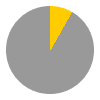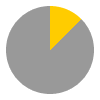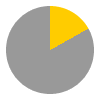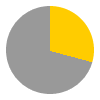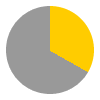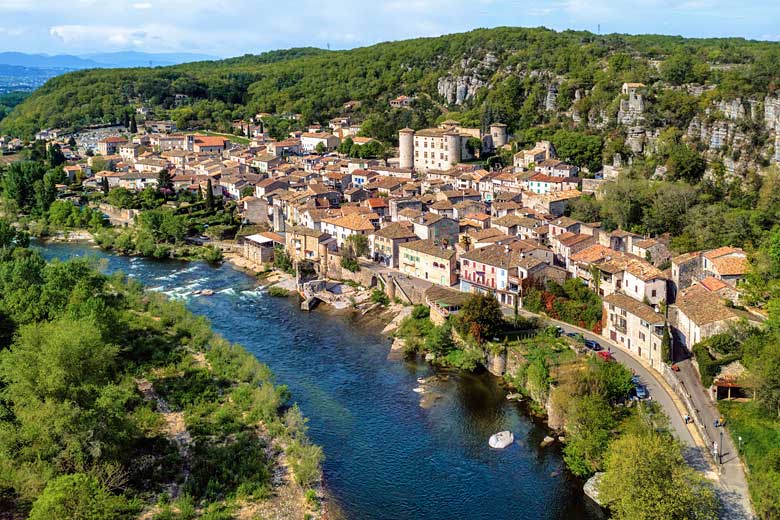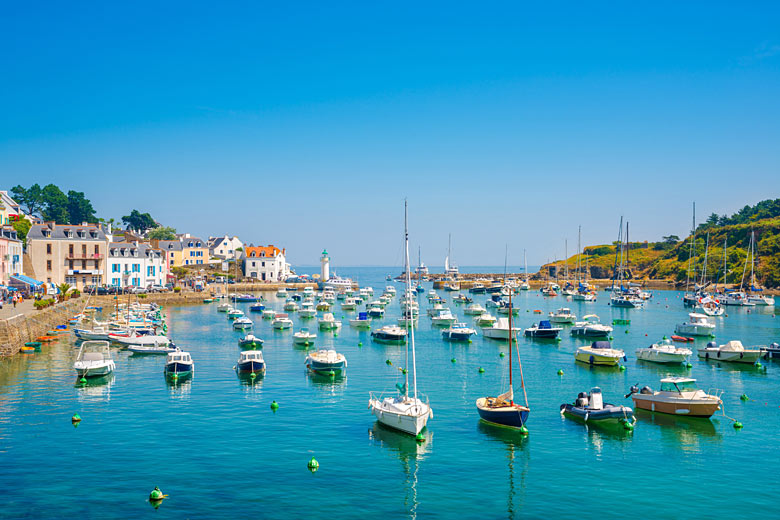- Book flights to Serbia in 2025/2026 with Air Serbia
- Check the lowest fares on routes via Belgrade, Serbia
- Fly to/from London or other popular European cities
France weather by month
France is the largest country in Western Europe, and the relaxed French culture is evident throughout, from cosmopolitan cities with their historical architecture, to picturesque rural villages and sleepy Mediterranean towns.
| Jan | Feb | Mar | Apr | May | Jun | Jul | Aug | Sep | Oct | Nov | Dec | |
|---|---|---|---|---|---|---|---|---|---|---|---|---|
| Maximum daytime temperature °F |  43 43 |
 45 45 |
 52 52 |
 57 57 |
 64 64 |
 70 70 |
 75 75 |
 73 73 |
 68 68 |
 61 61 |
 50 50 |
 45 45 |
| Hours of sunshine (daily) | ||||||||||||
| Days with some rainfall |  17 17 |
 14 14 |
 16 16 |
 15 15 |
 15 15 |
 13 13 |
 11 11 |
 12 12 |
 12 12 |
 14 14 |
 15 15 |
 16 16 |
More about France
France by month
Jan Feb Mar Apr May Jun Jul Aug Sep Oct Nov Dec
Recommended for France
The climate guide for France (Paris) shows long term monthly weather averages processed from data supplied by CRU (University of East Anglia), the Met Office & the Netherlands Meteorological Institute. Find out more about our data sources.
Top France destinations
Below are average maximum temperatures at popular countries, regions and places in France for next month - August. Select a destination to see the climate guide for all months of the year.
All France regions
All France destinations
A B C D E F G H I J K L M N O P Q R S T U V W X Y Z
A
- Abbeville
- Agde
- Agen
- Aix-en-Provence
- Ajaccio, Corsica
- Albi
- Alencon
- Amiens
- Angers
- Angoulume
- Annecy
- Antibes
- Arcachon
- Arles
- Arras
- Arzon
- Aubenas
- Audierne
- Aurillac
- Avignon
B
- Barneville-Carteret
- Bastia, Corsica
- Bayeux
- Bayonne
- Beauvais
- Benodet
- Bergerac
- Besancon
- Beziers
- Biarritz
- Bidart
- Biscarrosse-Plage
- Blois
- Bonifacio, Corsica
- Bordeaux
- Boulogne
- Bourg-Saint-Maurice
- Bourges
- Brest
- Briancon
- Brive-la-Gaillarde
C
- Cabourg
- Caen
- Cahors
- Calais
- Calvi, Corsica
- Campo Moro, Corsica
- Cannes
- Cap-Coz
- Cap-Ferrat
- Carcassonne
- Cargese, Corsica
- Cavalaire-sur-Mer
- Centuri, Corsica
- Cervione, Corsica
- Chalon
- Chambery
- Chamonix
- Chartres
- Cherbourg
- Chinon
- Clermont-Ferrand
- Cognac
- Collioure
- Colmar
- Compiegne
- Corte, Corsica
- Courchevel
- Courseulles sur Mer
- Crozon
D
E
F
G
H
I
- Ile d'Yeu
- Ile de Re
- Ile Rousse, Corsica
- Isola 2000
J
L
- L'Orient
- La Grande-Motte
- La Plagne
- La Rochelle
- Lacanau Ocean
- Lannion
- Laon
- Le Conquet
- Le Guilvinec
- Le Havre
- Le Lavandou
- Le Mans
- Le Pouliguen
- Le Puy en Velay
- Le Touquet
- Les Issambres
- Les Sables d'Olonne
- Lille
- Limoges
- Lourdes
- Lumio, Corsica
- Lyon
M
- Macon
- Mandelieu-la-Napoule
- Manosque
- Marseille
- Maubuisson
- Mende
- Menton
- Meribel
- Metz
- Moliets-et-Maa
- Mont St Michel
- Mont-de-Marsan
- Montherme
- Montpellier
- Mulhouse
- Muratello, Corsica
N
O
- Olmeto, Corsica
- Orleans
- Ouistreham
P
- Paris
- Patrimonio, Corsica
- Pau
- Perigueux
- Perpignan
- Perros-Guirec
- Pianottolli, Corsica
- Pinarello, Corsica
- Poitiers
- Pornichet
- Porto, Corsica
- Porto Pollo, Corsica
- Porto Vecchio, Corsica
- Propriano, Corsica
Q
R
S
- Saint Girons
- Saint-Jean-de-Luz
- Saint-Lary-Soulan
- Saint-Martin-Vesubie
- Saint-Nazaire
- Saint-Raphael
- Saint-Tropez
- Sainte-Maxime
- Santa Giulia, Corsica
- Sartene, Corsica
- Solenzara, Corsica
- Soulac-sur-Mer
- St Florent, Corsica
- St Malo
- Strasbourg
T
V
- Val d'Isere
- Val-Thorens
- Valence
- Valmorel
- Vannes
- Verdun
- Versailles
- Vichy
- Vieux-Boucau-Les-Bains
- Villefranche-sur-Mer
Z
- Zicavo, Corsica
Metric (°C) | Imperial (°F)
France climate overview
France contains three separate mountain ranges, the Massif Central in the centre of the country, the Alps in the southeast, and the Pyrenees along the Spanish border. All have spectacular mountain scenery with craggy peaks, forested slopes and lush meadows below.
The main river valleys draining the mountains, most notably the Loire, the Rhône and it's many tributaries, and the Garonne, are all great centres of wine production. Winters see extensive snow across all the mountain ranges, supporting top-class ski resorts in the Alps and Pyrenees, while summers are mostly warm and sunny.
The western half of the country is largely flat, fertile and intensively cultivated. France is the world's fifth largest producer of wheat giving rise to miles upon miles of featureless arable farmland, particularly noticeable in Normandy where the occasional field of sunflowers brightens up the landscape.
The west is also the wettest part of France with showers throughout the year, which can turn thundery in the warm summers. Winters are cool or cold.
France's coasts are long and varied. The Atlantic coastline is known for its sandy beaches in the south, distinctive chalk cliffs in Normandy, and rugged rocks in Brittany.
The Mediterranean beaches are typically pebbly, although sandy stretches also exist along the Cote d'Azur on the French Riviera. This is the sunniest part of the country with hot dry summers, and cool to comfortable winter temperatures with scattered showers.
The island of Corsica in the Mediterranean is also part of France. Named 'the scented isle' from the flowers of the 'maquis' shrub that covers much of the island and whose fragrance carries far out to sea, Corsica is wild and mountainous.
More about France
Compare France with the UK
Below the France chart shows average maximum daytime temperature for France (Paris) and the UK (London).
Maximum daytime temperature (°F)
Metric (°C) | Imperial (°F)
Compare more France weather >>
Be inspired
Get your weekly fix of holiday inspiration from some of the world's best travel writers plus save on your next trip with the latest exclusive offers
We promise not to share your details
Related posts
Popular travel offers
Explore holidays in the sun for less
- Beach holidays
- Family holidays
- City breaks
- Summer holidays
- Winter sun holidays
- Holiday offers
- Top travel brands
- Airlines & flights
- Discount hotels
- Airport parking deals
- TUI
- Jet2holidays
- easyJet holidays
- Love Holidays
- January sales
Airport parking
- Manchester Airport
- Stansted Airport
- Bristol Airport
- Luton Airport
- Birmingham Airport
- Edinburgh Airport
- Gatwick Airport
- Glasgow Airport
- Newcastle Airport
Airport lounges
- Manchester Airport
- Birmingham Airport
- Bristol Airport
- Edinburgh Airport
- Glasgow Airport
- Heathrow Airport
- Newcastle Airport
- Stansted Airport
- Gatwick Airport

